This post may contain affiliate links. Read our disclosure policy.

Butter or shortening? It’s a debate I’ve heard among many bakers and even within the comments of my blog so I decided to tackle another round of baking experiments. Recently Clabber Girl challenged me to use their baking powder in a series of posts all about biscuits throughout the rest of the year. What better subject for baking experimentation? Also, how cool is my job? To kick off this month’s biscuit post I’m experimenting with one of the most important ingredients of the biscuit and that’s the fat. We wanted to find out which fat is better for making the perfect biscuit: butter or shortening?
I wanted to go beyond showing you how to make biscuits and help you understand how the ingredients impact your final product. It seems so simple to just substitute out one ingredient with another but baking is truly a science and every change you make can result in a totally different product! Keep reading to find out how butter and shortening impact everything from the dough, appearance, taste, and texture of your typical buttermilk biscuits and to find out which was my favorite!
Be sure to follow Clabber Girl on Facebook for tons of baking recipes and tips and stay tuned for more posts all about biscuits!
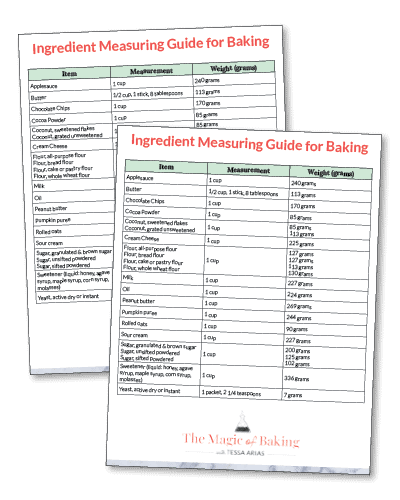
Free Ingredient Measuring Guide!
The key to consistent baking success is a click away. Sign up to get instant access to my printable Ingredient Measuring Guide now!
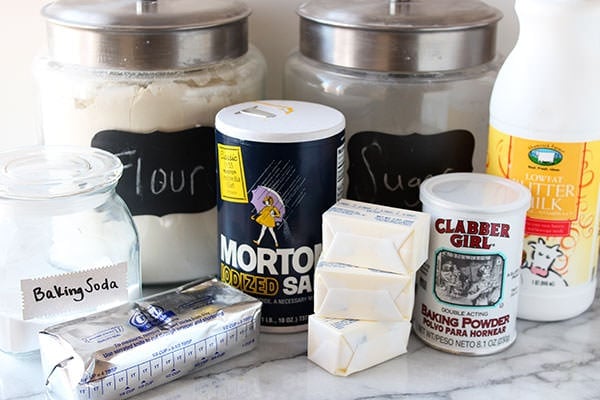
Perhaps the best aspect of homemade biscuits is just how simple they are with just a handful of staple ingredients and a few steps. I’ll never understand how those processed canned biscuits became so popular since biscuit dough takes just minutes to whip up! Sure, you’ll have a few more dishes to clean but there’s nothing that compares to the unadulterated goodness of a homemade biscuit.
To experiment with butter versus shortening, I used the standard biscuit recipe (below), which is my go-to. I used the same techniques, ingredients (except the fat of course), baking times and temperatures to ensure consistency between the two batches.
All Butter Dough
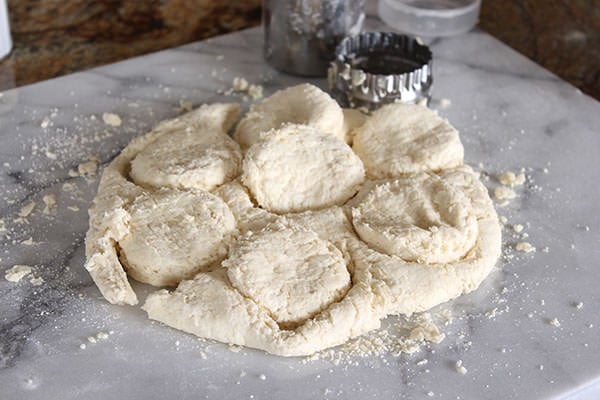
The all-butter dough was slightly less cohesive than the all-shortening dough, and I attribute this to the fact that the butter’s texture is firmer than shortening. Even when both fats were chilled in the same freezer for the same length of time, the butter was significantly more solid which made it easier to retain chunks of butter while mixing the dough.
The cold chunks of butter are important because as they melt into the biscuit while baking they create tiny pockets of steam that puffs and lifts the dough. These pockets turn into that beautiful light and flaky texture we crave with biscuits. The steam comes from butter’s water content, which is usually about 15 to 20 percent.
Those chunks of butter, while as glorious as they become while baking, do make the dough a little loose and slightly difficult to work with. Not to mention butter’s low melting point makes it more difficult to work with as it needs to be cautiously kept cold.
Shortening Dough
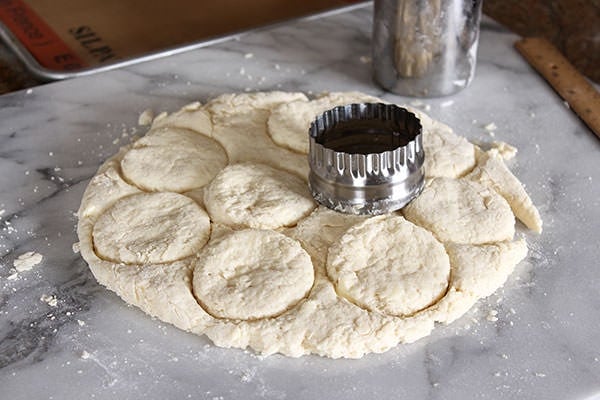
The shortening dough, on the other hand, came together much more easily. In fact, it came together almost too much. If you overwork biscuit dough you run the risk of getting tough and dense biscuits. With the shortening being so sticky itself, even when chilled, it made it hard to retain any sort of looseness in the dough. Instead, it all came together in a slightly sticky, shaggy mass.
This doesn’t matter as much as it does with the all-butter dough, however. Where butter is only about 80 percent fat and the rest is milk and water, shortening is 100 percent fat. There is no steam created in shortening dough that lends the same light, airy flakiness as with butter dough. While the shortening dough was nicely cohesive, the stickiness made it difficult to roll out and shape.
Any type of biscuit dough, or even pie dough which is very similar, is going to be more difficult to work with than a soft, smooth, and supple yeast dough. The pay off, however, is that it only takes about a half hour to make biscuits from start to finish!
Baking the Biscuits
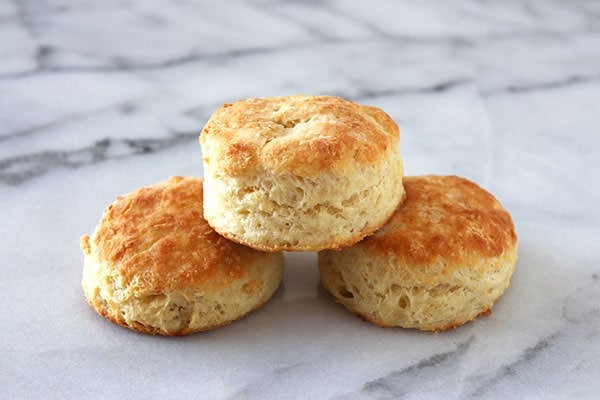
So, what happened when the biscuits came out of the oven? Well, upon first glance the butter biscuits were significantly more browned with flatter tops. When bitten into, the butter biscuits were moist and slightly spongier than the shortening biscuits. The best part was the flavor and slightly more crunchy exterior texture contrasted by that ultra tender interior.
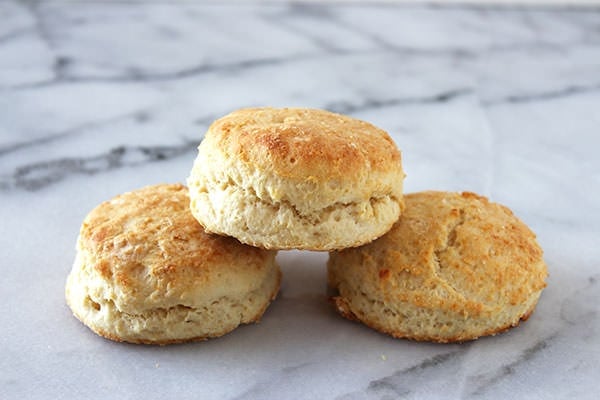
The shortening biscuits were much more pale, with slightly domed craggy tops. They also seemed a bit more irregular in height. The biscuits themselves were more crumbly when bitten into and lacked that characteristic butter flavor that simply cannot be replicated by anything artificial.
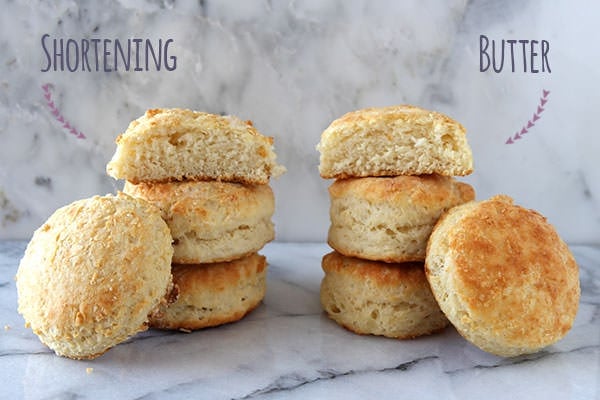
I offered two biscuits to Jared and made him guess which was butter and which was shortening and he got it right. You can definitely taste the difference and as a butter lover, I definitely preferred the butter biscuits. However, the shortening biscuits did remind me of biscuits I’ve had at Southern eateries in the past with their slightly drier, crumblier texture.
Since shortening has a higher melting point than butter, meaning it requires more heat to melt shortening than it does to melt butter, it makes shortening less challenging to work with. You don’t have to worry as much about it getting too warm in the dough and it brings together the dough more easily. However, that higher melting point can also be a very bad thing because it means that it doesn’t fully melt in the mouth like butter does, leaving behind an unpleasant waxy coating on the palate.
So what’s the final verdict?
Butter is the winner here. The butter biscuits were moister with that wonderful butter taste and melt-in-your mouth texture. I’d be curious to test out substituting half or just two tablespoons of the butter with shortening to see if you get the best of both.
Have you experimented with that? What do you prefer to use in your biscuits?
This post is sponsored by Clabber Girl. All opinions provided are my own.
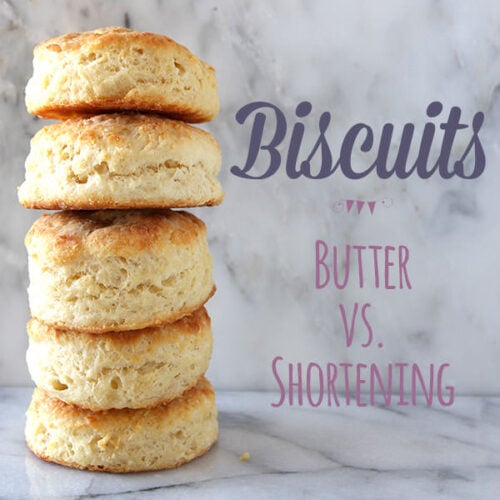
Biscuit Recipe
Email This Recipe
Enter your email, and we’ll send it to your inbox.
Ingredients
- 2 cups (9 ounces) all-purpose flour, plus more for dusting
- 2 teaspoons granulated sugar
- 1 tablespoon Clabber Girl baking powder
- 1/4 teaspoon baking soda
- 1 teaspoon fine salt
- 6 tablespoons unsalted butter OR vegetable shortening, very cold
- 1 cup buttermilk, chilled
Instructions
- Preheat the oven to 450°F. Line a large baking sheet with parchment paper.
- In the bowl of a food processor, combine the flour, sugar, baking powder, baking soda and salt. Add the butter or the shortening and pulse the food processor several times to cut the fat into the flour until the mixture resembles coarse meal. You can also do this by hand with a pastry blender. The faster you do this the better, you want the fat to remain cold. Stir in the buttermilk until just combined. DO NOT overmix, the dough will be slightly sticky.
- Turn the dough out onto a floured surface and dust the dough with flour. Gently pat the dough out until it’s a 1/2-inch in thickness. Use a 2-inch round biscuit cutter to push straight down through the dough to cut out circles, try not to twist the cutter. Place the biscuits on the baking sheet, spacing 2-inches apart. Reform the scrap dough into 1/2-inch thickness, being sure to work with it as little as possible, before cutting out more circles. You should get 10 to 12 biscuits.
- Bake the biscuits until golden brown, about 12 to 15 minutes.
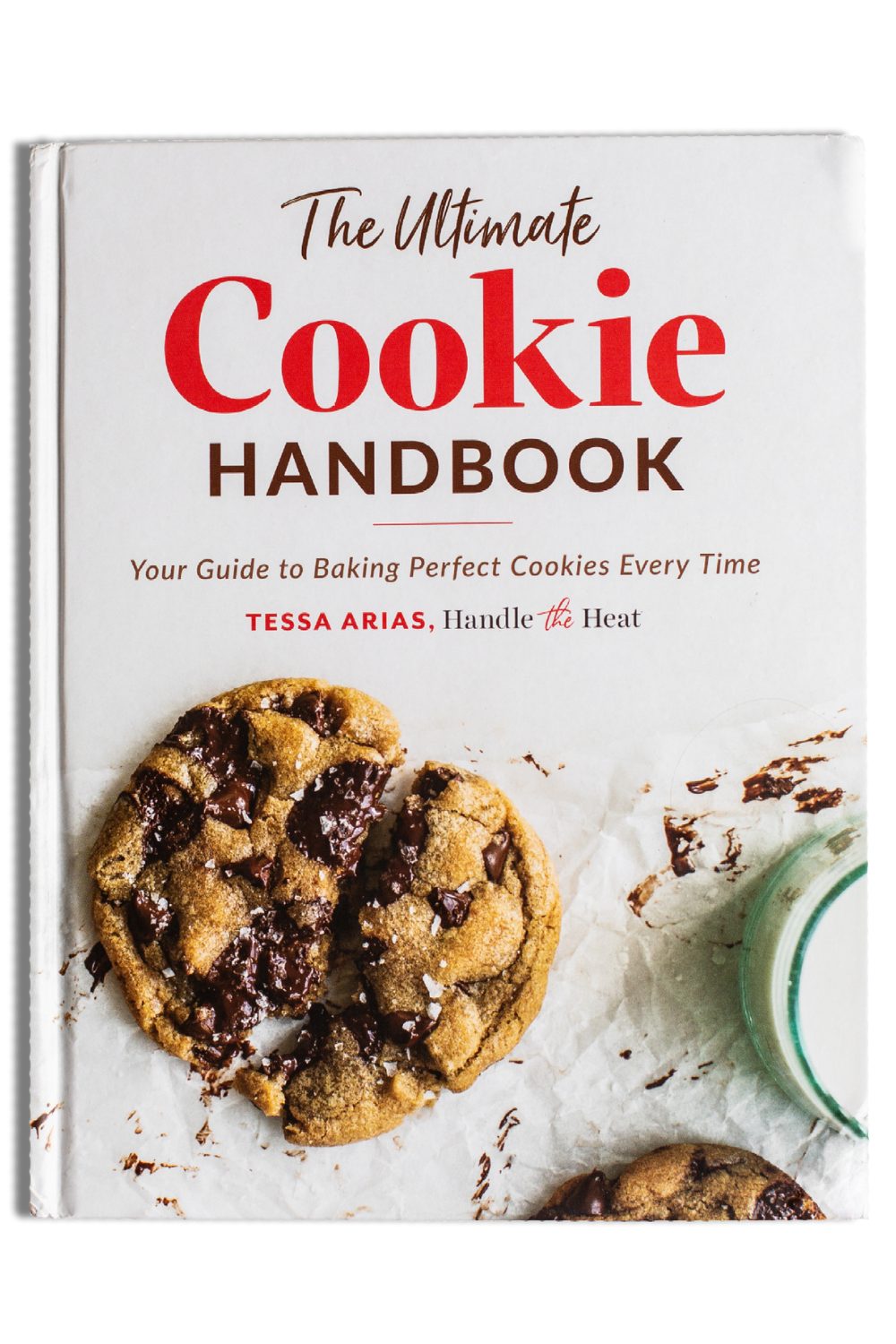
The Ultimate Cookie Handbook
Learn the sweet SCIENCE of cookie baking in a fun, visual way to customize your own recipes frustration-free. Plus, my best 50+ homemade cookies!

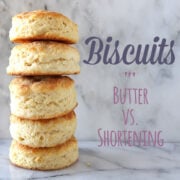
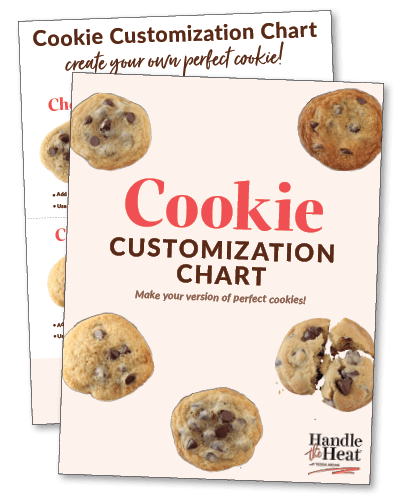
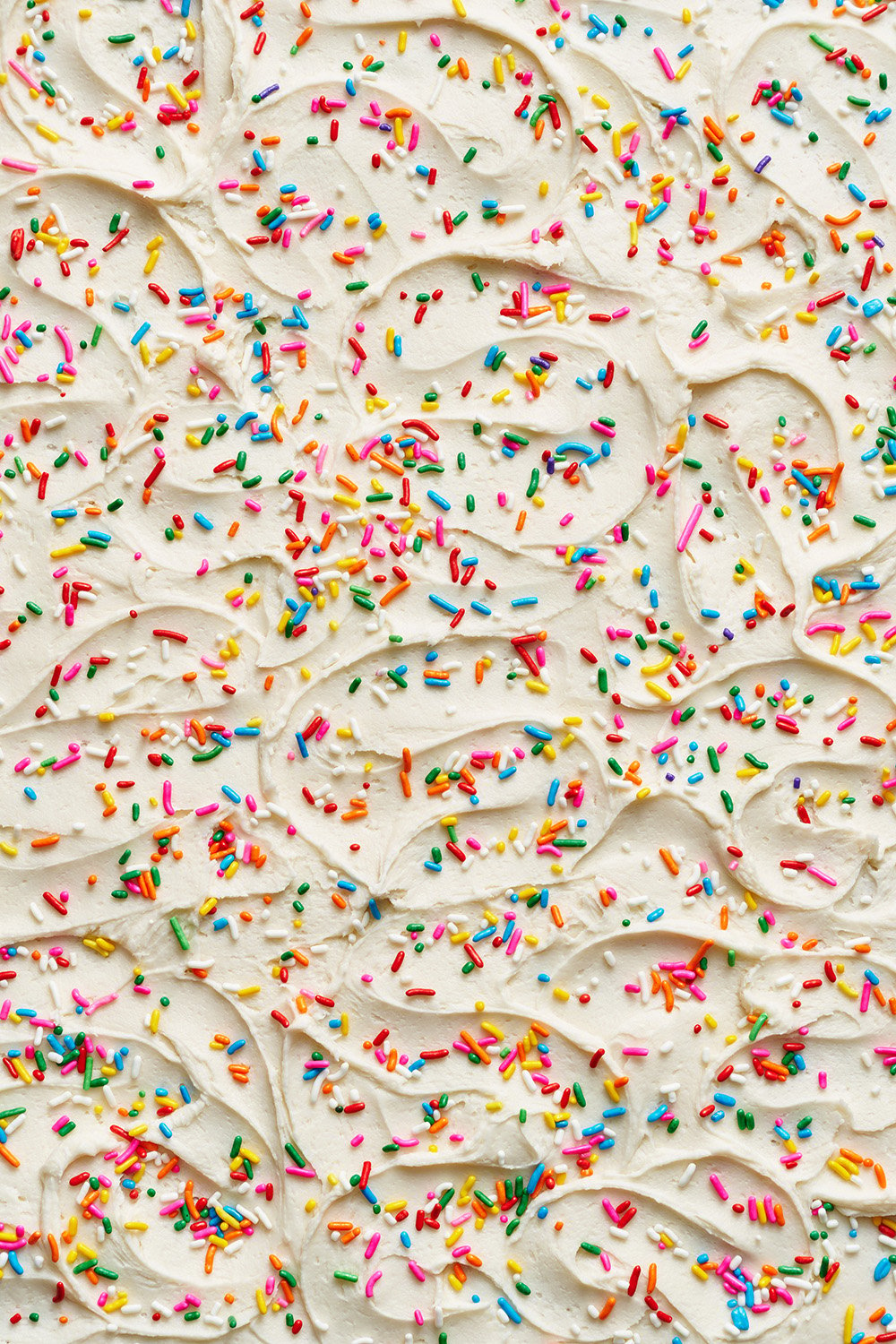



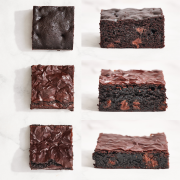
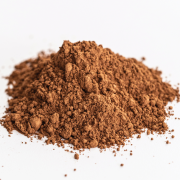
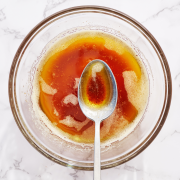



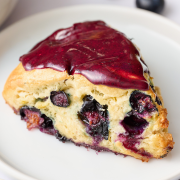








This recipe (I used butter) is absolutely glorious! Easily the best biscuits I have ever tasted, and this was on the first try, having never made from-scratch biscuits. I will be saving it for further use and shall refer everyone to this blog. Thank you so much!
Thank you! This is exactly what I was looking for! I wondered what the difference was and now my biscuits will be butter.
Thank you so much for this article. I have been on a biscuit obsession for the past two weeks. I really want them to be so tall and fully. I have had trouble getting them like this. I do think butter is better than shortening and I tried both over these past two weeks. I have been cooking them at 500° and I have been folding the loaf on top of itself about 3-7 times to create layers. Would you suggest doing this or not? I also have been using self-rising flour (white Lilly) because I accentually bought this instead of all-purpose. I notice most recipes call for all-purpose with baking powder and soda. Does this make a difference?
Thanks!
Thank you so much for this recipe. They turned out amazing!!! I have never made biscuits using butter and these are far superior to any other recipe I have ever made using shortening. Thank you again for a wonderful, easy to follow recipe.
Would these freeze for short periods of time? Have heard of, but not yet tried, a method of making the biscuits, freezing them as individual items, then baking at 450 for 8 minutes, shutting the oven off, and let the biscuits remain undisturbed in the oven for another 7 to 8 minutes. This would maximize the prep, mix and clean-up.
Love the hints! Learned to cook from my grandma (she never measured anything either but her food was ALWAYS delicious!
Sorry for the duplicate posts. I didn’t see the first one, so I typed up another one.
My grandmother (South Carolina) made hers with bacon grease. I could never figure out how to do this and neither could anyone else. She never kept recipes, she just cooked, so I have no recipe to go by. She passed away years ago so I can’t ask her for help. Do I freeze the bacon grease? Use it in place of butter or shortening or add it to the mix?
So sorry to hear of your grandmother’s passing, she sounds like she knew her way around the kitchen! Sadly I’ve never used bacon grease in baking like that. I would assume freezing would be the best way (I had to freeze the shortening to make it workable). Good luck!
My grandmother (South Carolina) made hers with bacon grease. I could never figure out how to do it her way, and neither could anyone else. She never kept recipes, she just cooked, so I have no recipe to go by. She passed a few years ago so I can’t ask her for help. Would the bacon grease need to be frozen? Would I use it like the butter and shortening? Or add it in there somehow?
Having spent the WWII years on the N.C. farm of my maternal grandparents I watched my grandmother make sheets and sheets of biscuits every morning. Half were plain biscuits and the other half had a cube of cheddar cheese tucked into the middle. She always used a combination of lard rendered from the fall slaughtered hog and butter; my grandfather was the local milkman and my grandmother churned the butter. A task I was often press-ganged into performing. Those biscuits were never rolled and cut, after a quick beating in a large bowl my grandmother would simple pull off a biscuit sized lump and with a deft roll place them on the baking sheet, always just touching each other. I have repeated the process many times but have never acquired the knack of pulling identical sized pieces of dough every time. …Best to all in the endeavor!
Wow that’s amazing!! What fun memories 🙂
its true that butter is best choice,using it in biscuits since long. you have really done a good job to provide this comparison
I mix the dry ingredients, cut in the fat THEN freeze in plastic baggies, Add my liquid when I am ready to mix/bake. The cold fat then does it’s job of steaming those nice pockets for truly fluffy biscuits, I usually mix and freeze 4-6 baggies at a time. we love biscuits and gravy at our house on Saturday mornings
1. I have mixed Shortening/butter together when fairly soft.
2.spread out on cookie sheet,
3. put in freezer for a few minutes,
4 then add to dry mix. I still put in freezer in 2 cup increments for a batch.
I do prefer butter as well.
love your blog thank you